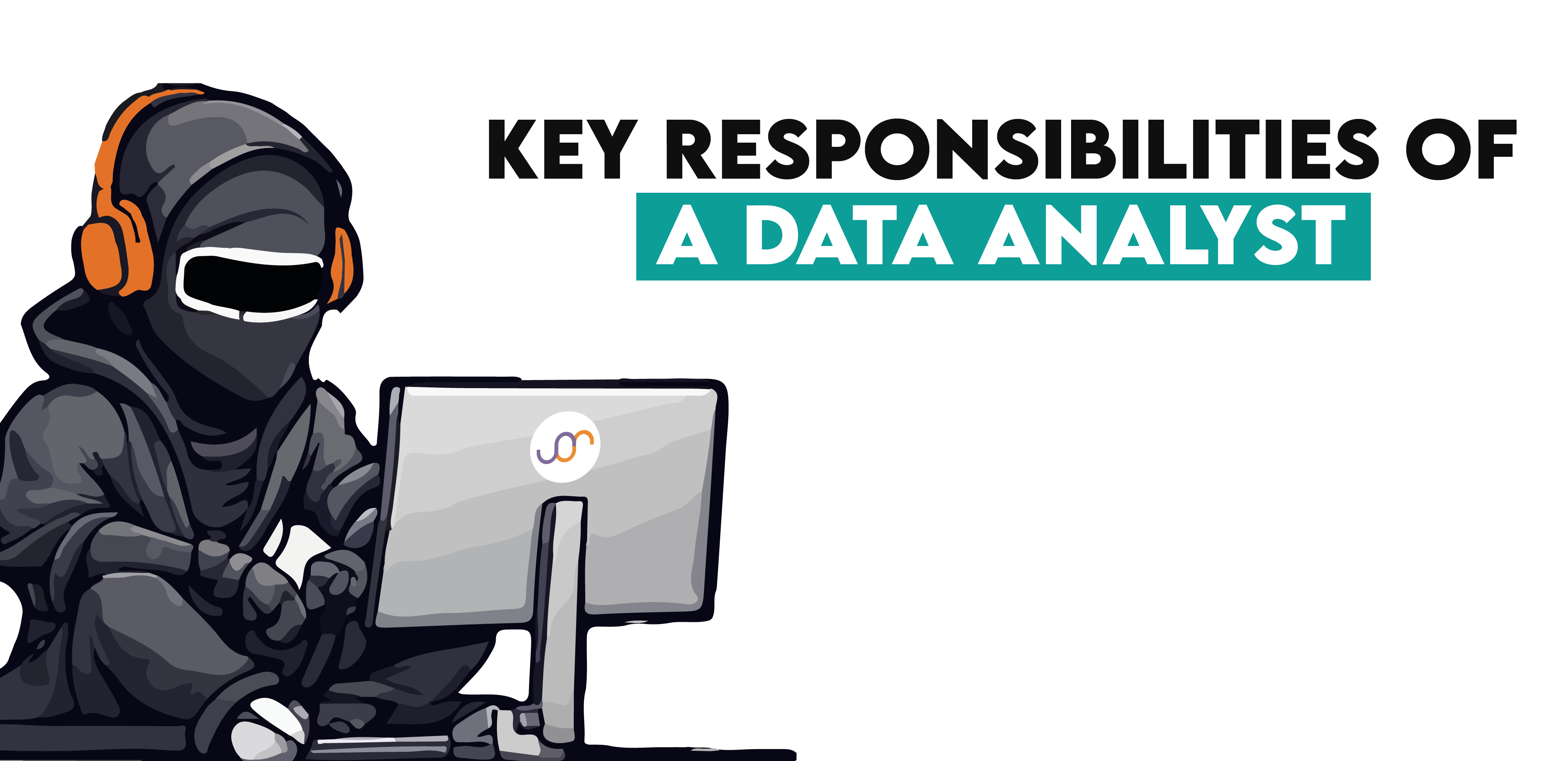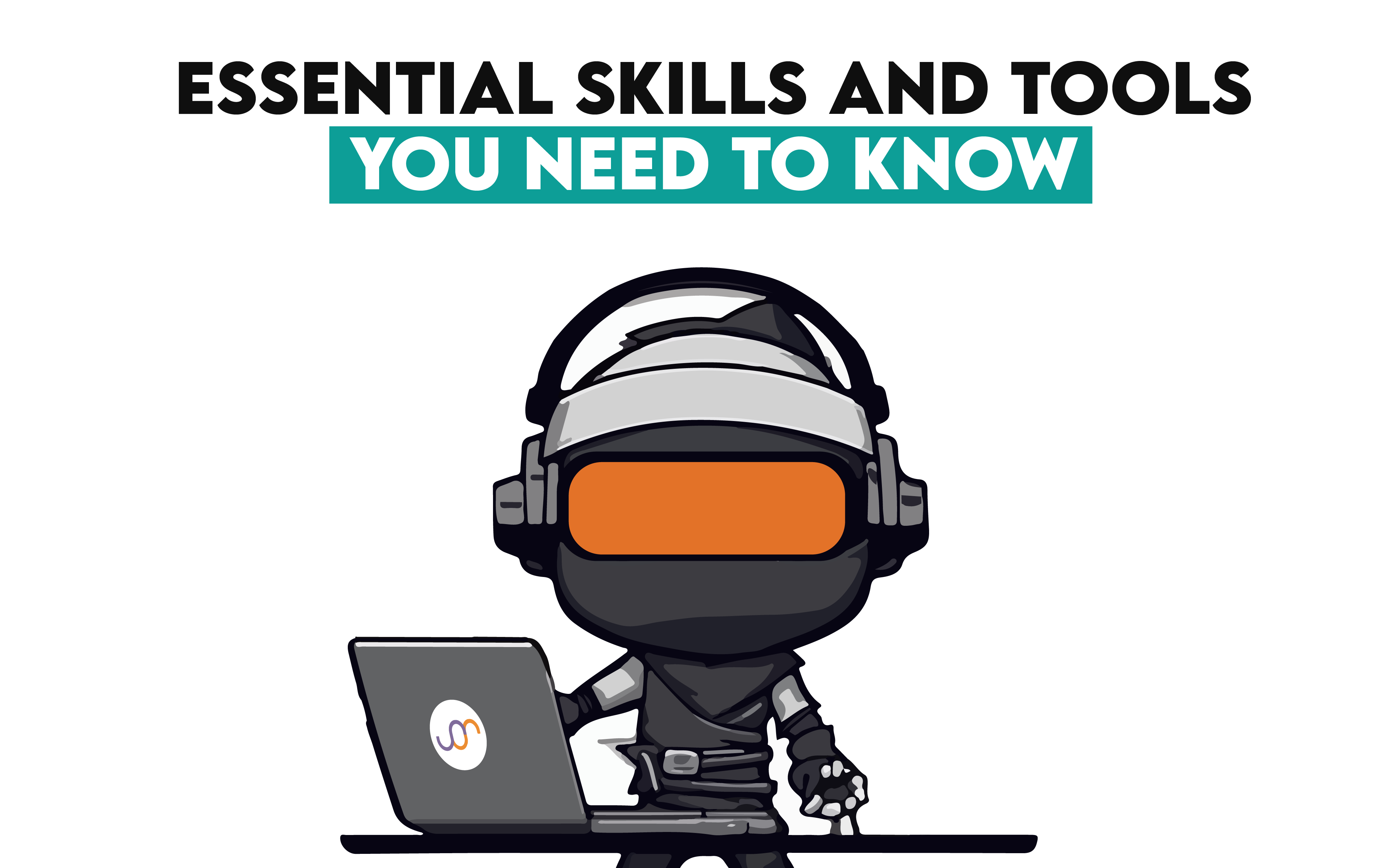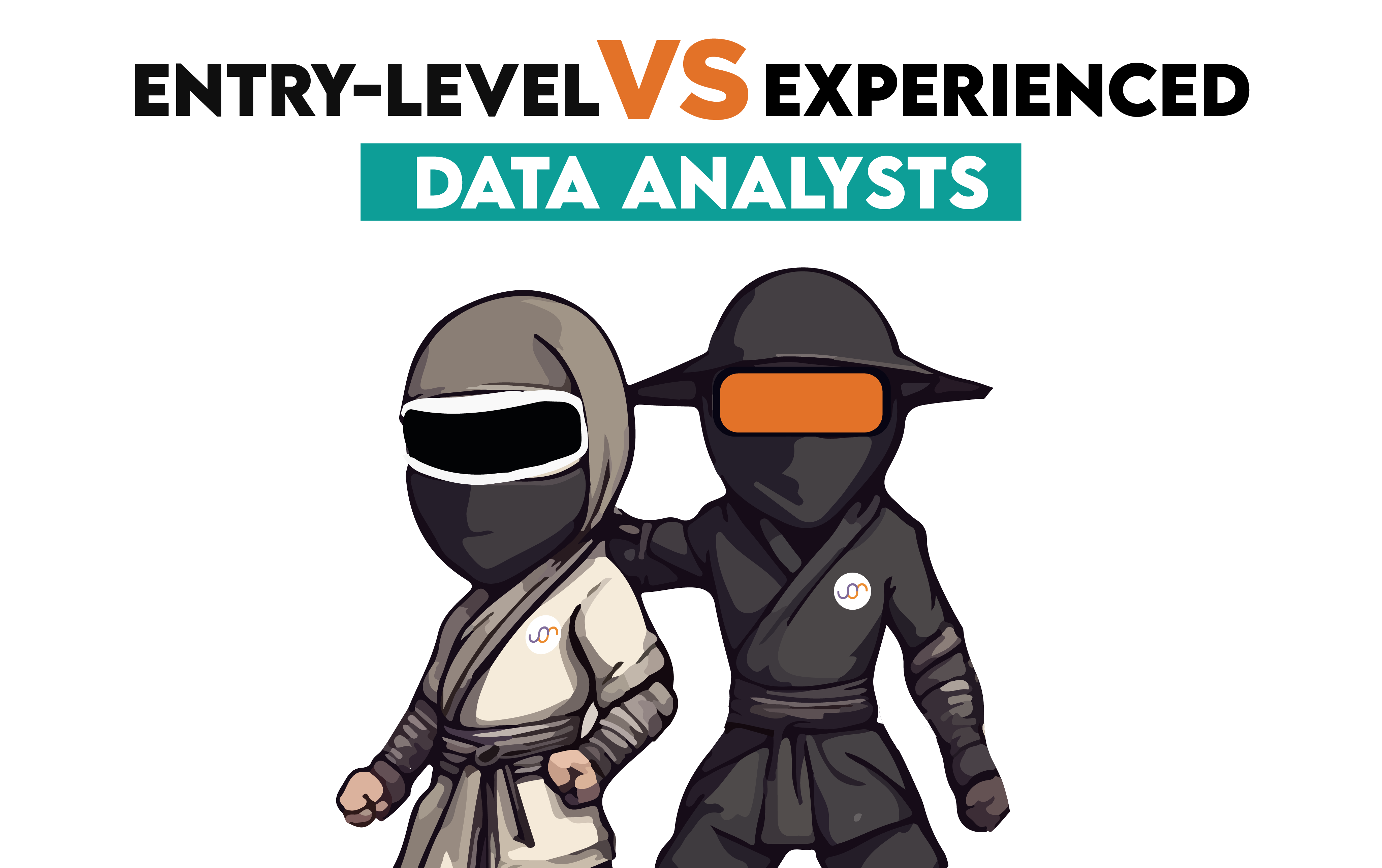What Does an Entry-Level Data Analyst Do?

 Written by:
Written by:Nathan Rosidi
An entry-level data analyst gathers, processes, and analyzes data, utilizing statistical tools and visualization techniques to provide actionable insights and support business decisions.
Over 2.5 quintillion bytes of data are generated daily, and the need for data analytics professionals is only increasing.
This information alone explains the importance of knowing precisely what an entry-level data analyst does today.
Let’s see what these professionals do, their business roles, and what skills they should possess.
Definition of a Data Analyst
A data analyst collects and processes large datasets before conducting various statistical analyses. In this case, data analysts utilize their technical expertise to maintain the accuracy and quality of data and convert it to value-added information that can assist an organization in making desired decisions.
A data analyst possesses several job opportunities in business, finance, healthcare, technology, marketing, and government, among other areas, with responsibilities such as strategy, process improvement, or enhancing customer understanding.
Key Responsibilities of a Data Analyst

Understanding the responsibilities of a data analyst is paramount in outlining the day-to-day operations that a person in this position is involved in and the role thereof in an organization. Below, I identify the key responsibilities of an entry-level data analyst that define what this person does in the organization.
Data Collection and Management
- Gather Data: Collect data from various sources to ensure accuracy and relevancy.
- Data Storage: Ensure efficiency in storing the collected data while ensuring integrity and accessibility.
Data Cleaning and Preparation
- Data Cleaning: Identifying data inaccuracy and inconsistency to correct them to maintain data quality.
- Data Preparation: Organize raw data and transform it into a format that can be analyzed.
Data Analysis
- Statistical Analysis: Interpret data using statistical tools and techniques and make predictions.
- Mathematical Modeling: Use mathematical models to solve problems and optimize, critical in data-informed decision-making.
Data Visualization
- Visual Representation: Create visuals that communicate data insights efficiently with technical and non-technical audiences.
- Dashboard Development: Use tools like PowerBI, Tableau, or Google Data Studio to develop dashboards that give real-time data insights.
Reporting and Communication
- Report Generation: Compile detailed reports of findings that outline clear and actionable insights.
- Presentation: Communicate data and analysis in an understandable and value addition way to the organization.
Decision Support
- Strategic Recommendations: Offer recommendations based on data analysis findings for strategic decision-making.
- Problem-Solving: Use analytical skills to solve problems, increasing operational efficiency.
Collaboration and Team Interaction
- Work Across Teams: Working with different departments to understand their data requirements and provide relevant insights.
- Stakeholder Management: Constant communication with stakeholders to ensure alignment and consolidate the value of data insights.
Continuous Learning and Development
- Skill Enhancement: Regularly hone analytical skills and knowledge and identify new data analysis tools and how they are used.
- Trend Watching: Keeping up with industry trends ensures the organization stays ahead of its competition.
Essential Skills and Tools You Need To Know As A Data Analyst

Now, let’s discover what skills and tools you must know as an entry-level data analyst. Let’s start with Math!
Math and Statistics
Maths and statistics form the backbone of data analysis. As an entry-level data analyst, it is crucial to be able to work with essential to intermediate maths.
- Math: Math includes familiar concepts such as algebra and derivatives; the latter is beneficial because optimizing functions is a classic requisite of data modeling.
- Statistics: Knowledge of statistics includes both descriptive statistics used in the summary of data and inferential statistics used to make predictions from the data
- Probability Theorem: The Probability Theorem makes you aware of the role of chance in your work and may help you assess risk, make predictions, and test hypotheses.
- Linear Algebra: Linear Algebra allows for the handling and manipulation large datasets and operations on multi-dimensional data arrays.
These skills are necessary to analyze data effectively, making insights from large, complex databases. They are the fundamental skills upon which all other more advanced techniques are based.
Coding Skills
As an entry-level data analyst, coding will be critical to efficiently processing and interpreting the data. The tools and skills to develop expertise in programming include:
Python
Python is a general-purpose language with libraries that have made different areas of data activities more accessible.
These include:
- Data Cleaning: With tools like Pandas and NumPy
- Data Manipulations: Using Pandas to transform and structure raw data
- Data Analysis: Using SciPy for more sophisticated statistical actions
- Data Visualization: With Matplotlib and Seaborn to create graphical representations
R
It is a statistical language that can analyze a wide range of data.
- Statistical Analysis with help from ggplot2 to visualize data and dplyr to manipulate data
- Data Cleaning using tidyr and dplyr to ensure data is tidy
- Data Manipulation using dplyr to structure designed data for specific actions
- Data Visualization is done with ggplot2 for visual representations
Excel
- Using statistical functions and built-in tools to analyze data
- Functionalities to use pre-installed functions to calculate data at a glance
- Pivot tables are used to summarize data sets into manageable information
- Data Import and Export to enable importing and exporting of data to and from other platforms
SQL
- Ability to use SQL functions to extract and manipulate data
- Writing a concise high-level query to return the fastest data
- Database management procedures to maintain and optimize database systems
- Data integration merging of databases to provide a broad scope of information.
These skills and the tool-specific libraries are standard practice for a wide range of data analytics functions a data analyst will use.
High-Level Data Visualization Tools
Given the growing intricacy of data, high-level data visualization tools have become necessary to translate complicated data sets into comprehensive visual stories. Some of the tools that any entry-level data analyst should be familiar with are as follows.
PowerBI
- Interactive Visualizations: Data analysts can create dashboards, reports that include real-time data, and interactive visualizations.
- Data Integration: seamlessly integrates various data sources and synthesizes information.
- Customization: the user can customize visualizations to suit unique business needs or emphasize critical metrics.
Tableau
- Ease of Design: Tableau is user-friendly and allows rapid learning and deployment.
- Advanced Analytics: Perform complex calculations, visualizations, and manipulation within the tool.
- Collaboration: Tableau Server and Tableau Online aid the spread of insights across teams or with stakeholders.
- Reporting: Tableau software provides a consolidated view of relevant data, which users can access to represent their analysis.
Google Data Studio
- Accessibility: It is free to use, and the user can use it with multiple Google services, such as Google Sheets and Google Analytics.
- Real-time Reporting Activity: The software provides data in real-time, which is helpful for time-bound decisions.
- Collaboration: It performs similarly to Google Docs, allowing multiple users to view and edit the report simultaneously.
Proficient use of these software tools is beneficial in making data more enticing and digestible and unraveling concealed patterns and connections that can change the whole decision-making process.
These are versatile accompaniments to any data analyst as they increase the depth and breadth of data exploration and presentation.
Soft Skills
As much as technical skills are fundamental in your career as an entry-level data analyst, soft skills are equally crucial to get the best out of you to communicate your insights and work with others.
The following five soft skills are essential and must be achieved by every data scientist entering this field; every data analyst should possess these soft skills:
Communication
- Effective communication: Able to explain complex data insights in an understandable way to non-techie demography.
- Presentation: Create and deliver a presentation that presents data and suggests what should be done to improve the current status.
A problem-solving attitude:
- Solutions-driven: Able to break down a significant problem and solve each part separately
Time management
- Strict with deadlines: Time-management, focus, and prioritize work to meet the delivery schedule
- Resilient: Keep focus on crucial tasks while adapting to unexpected changes
Responsive
- Collaboration: The willingness to answer other people’s questions
- Demand management: Should respond to requests from one person while guiding data requests to another responsible person
Responsibility
- Mistakes/ Solutions: Capable of taking responsibility for own mistakes and work not to repeat the same in the future
- Innovative Approach: Suggest changes based on your observation and take new tasks and improvement suggestions
Entry-level vs. Experienced Data Analysts

One critical distinction between entry-level and experienced data analysts concerns the technical skills and complexity associated with their job roles. Below are the competencies of entry-level and professional data analysts.
Math and Statistics
Entry-Level data analyst
- Basic to intermediate math
- Descriptive and inferential statistics
- Basic probability Theorems and Linear Algebra
Experienced data analyst
- Advanced mathematical modeling and statistics
- Deep understanding of theories with real-world applications
- Proficiency in advanced statistics and probability models.
Coding Skills
Entry-Level data analyst
- Programming in Python in data cleaning, manipulation, analysis, and visualization with libraries Pandas, NumPy, Matplotlib, and Seaborn
- Basic R programming
- Familiarity with SQL
Experienced data analyst
- Advanced programming in Python and R, basics of custom libraries,
- Advanced SQL and other database technologies
- Advanced database architecture and optimization and automation abilities.
High-Level Data Visualization Tools
Entry-Level data analyst
- Beginning use of PowerBI, Tableau, and Google Data Studio.
- Data integration skills and ability to customize visualizations for specific business needs.
Experienced data analyst
- Advanced data transformation and significant visualization high-level tools implementation
- Ability to deploy and manage enterprise-level data visualization platforms.
Soft Skills
Entry-Level data analyst
- Communication with colleagues
- Understanding of business needs
- Ability to set priorities.
Experienced data analyst
- Advanced communicative skills
- Problem-solving
- Continuous learning.
The shift from an entry-level to an experienced data analyst involves increased technical skills and a better understanding of the business context. The analyst must also be able to host projects, deploy and manage high-level visual platforms, and engage in strategic decision-making based on available data.
The differences refer to broader responsibilities with deep scope and complexity that require more professionalism and softer skills.
Educational Background and Certifications
Back then, no university degree was explicitly dedicated to data analysis. The skills we referred to were collected from various sources.
However, after data-related jobs became more famous and attractive, the first online courses became available on platforms like Coursera, Datacamp, and Udemy. After completing a few courses, you can take classes, work on data projects, and become a junior analyst.
Yet, nowadays, since tools like ChatGPT, Gemini, and Claude have been implemented, the responsibilities of data analysts may have changed because these tools significantly speed up the data analysis process.
However, suppose you plan to be a data analyst and have second thoughts about these LLMs. In that case, the available versions are less capable than even entry-level data analysts because, for example, the mathematical capabilities of these models are minimal right now.
Career Path
After completing courses, your first step should be undertaking a portfolio data project. Remember, this project will set you apart from other junior analysts, so investing significant effort is crucial. Take your time to create a portfolio project that may include:
- Dashboards: Developed using tools like PowerBi, Tableau, or Google Data Studio(Free Course).
- Website: Which hosts the dashboard.
- Data Visualizations: These should ideally be integrated into your website.
If your portfolio project successfully addresses a business problem, it might position you to hire talent while you are job searching!
Additionally, if you are on the verge of securing a job or preparing for interviews, consider reviewing interview questions from our platform. These resources are designed to help you prepare for your interview scenarios.
If you still have questions about what a data analyst is, read this one → “What is a Data Analyst? Everything You Need to Know”.
Challenges and How to Overcome Them
Now, after all these, you might dream that Google is looking for you to hire! And I hope they are, but sometimes things go differently than you dream of.
So, for your first job, look for something more manageable and smaller, such as freelancing from platforms like Upwork or Fiverr. Here, you can find more straightforward tasks, which is an excellent fit for you to grow confidence in Data Analytics.
In the meantime, you can continue applying to corporate companies like Meta, Apple, or Google, but you should also keep sharpening your skills and developing confidence by doing freelance jobs.
Finally, if you want to build something more significant and have a dream that can dedicate yourself for a long time, maybe you can be an entrepreneur/data analyst, where you are the brain and the founder of a company, which maybe will be the next Meta or Apple, who knows?
Here are the data analyst interview questions to see whether you have some skills to improve or not.
Conclusion
In this article, we discovered the complex profile of an entry-level data analyst and elaborated on the primary responsibilities from data collection and analysis to decision support and communication.
By acquiring the vital skills and competencies mentioned, you can improve your career potential and support any firm with considerable benefit. If you plan to prepare for an interview, don’t forget to visit our platform, where you can find interview questions from firms like Meta, Google, and Amazon.
Share


